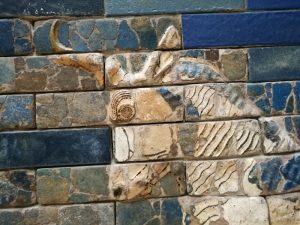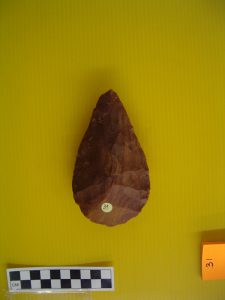Hunsgi – Localities V, VI
All 353 Hunsgi tool figures are available on request at prehistoricgalilee@gmail.com
Location – Hunsgi Valley, Gulbarga district of Karnataka State, South India. Excavation took place at two localities on the left bank of the Hunsgi Stream.
History of Research – The site was discovered and excavated by K. Paddayya between 1975 and 1979 (Paddayya 1977a, b, 1979, 1981, 1982).
Excavated Area – At Locality V, an area of 22.75 m2 and a trench (Trench 3) covering a total of 63 m2 were excavated. At Locality VI, a trench (Trench I) measuring 8 m on a north-south axis by 6 m on an east-west axis was dug.
Geology – The area is located at the junction between three major geological features: Archaean granite, Precambrian shales and limestone, and Deccan Trap basalt. Large parts of the valley floor are covered by a conglomerate rich in silicified limestone slabs, the principal raw material during the Acheulian (Paddayya 1982).
Stratigraphy – Various methods of geo-archaeological study have led to claims that the site is in situ (Paddayya 1982; Paddayya and Jhaldiyal 1998–99). See Fig. A11 for a detailed section.
Environment and Fauna – The Hunsgi Valley forms part of the semi-arid and drought-prone Deccan Plateau, with an annual rainfall of about 650 mm (Paddayya 1991). Using a settlement system approach, the excavator has reconstructed the environment on the basis of present-day conditions and ethnography (Paddayya 1982, 1987, 2001). Paddayya’s chief premise was that the geological and geographical conditions (i.e. water sources, drainage system, food sources, etc.) have not changed substantially since Acheulian times (Paddayya 1991). As in other Acheulian sites in this region, bone preservation is very poor.
Date – No dating method could be applied to the Acheulian sites of Hunsgi. However, some indication of the sites’ age can be gleaned from the nearby site of Isampur, which was identified as an Acheulian quarry (Paddayya et al. 2000; Paddayya and Petraglia 1997; Paddayya et al. 2006; Petraglia et al. 1999). At this site, limestone slabs were used to produce large-flake blanks for LCTs. These blanks are very reminiscent of those used in producing limestone LCTs at Hunsgi. Preliminary ESR dating performed on two teeth from Isampur has yielded an average date of 1.2 mya (Paddayya et al. 2002). While this may provide a chronological framework for the Hunsgi assemblage, it needs corroboration.




